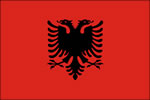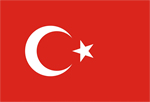|
GEOGRAPHY OF ALBANIA
Albania has a total area of 28,748 square kilometers. Its coastline is 362 kilometers long and extends along the Adriatic and Ionian Seas. The lowlands of the west face the Adriatic Sea. The 70% of the country that is mountainous is rugged and often inaccessible from the outside. The highest mountain is Korab situated in the district of Dibra, reaching up to 2,753 metres (9,030 ft). The country has a continental climate at its high altitude regions with cold winters and hot summers. Besides the capital city of Tirana, which has 800,000 inhabitants, the principal cities are Durrës, Korçë, Elbasan, Shkodër, Gjirokastër, Vlorë and Kukës. In Albanian grammar, a word can have indefinite and definite forms, and this also applies to city names: both Tiranë and Tirana, Shkodër
ECONOMY OF ALBANIA
Albania remains a poor country by Western European standards. Its GDP per capita (expressed in PPS-Purchasing Power Standards) stood at 25 percent of the EU average in 2008. Still, Albania has shown potential for economic growth, as more and more businesses relocate there and consumer goods are becoming available from emerging market traders as part of the current massive global cost-cutting exercise. Albania and Cyprus are the only countries in Europe that recorded economic growth in the first quarter of 2009. In its latest report, the International Monetary Fund (IMF) said Albania and Cyprus recorded increases of 0.4% and 0.3%, respectively. However, the country is still of low interest for major foreign investors due to frequent power shortages, occasional lack of water supplies and ubiquitous illegal activities.
Albania and Croatia have discussed the possibility of jointly building a nuclear power plant at Lake Shkoder, close to the border with Montenegro, a plan that has gathered criticism from the latter due to seismicity in the area. In addition, there is some doubt whether Albania would be able to finance a project of such a scale with a total national budget of less than $ 5 billion. However, in February 2009 Italian company Enel announced plans to build an 800 MW coal-fired power plant in Albania, in order to diversify electricity sources. Nearly 100% of the electricity is generated by ageing hydroelectric power plants, which are becoming more ineffective due to increasing droughts.
The country has some deposits of petroleum and natural gas, but produces only 6,425 barrels of oil per day. Natural gas production, estimated at about 30 million cubic meters, is sufficient to meet consumer demands. Other natural resources include coal, bauxite, copper and iron ore
Agriculture is the most significant sector, employing some 58% of the labor force and generating about 21% of GDP. Albania produces significant amounts of wheat, corn, tobacco, figs (13th largest producer in the world) and olives.
ALBANIANS IN TURKEY
According to a 2008 report prepared for the National Security Council of Turkey by academics of three Turkish universities in eastern Anatolia, there were approximately 2,500,000 Albanians living in Turkey. Most of these people are assimilated into Turkish nation, and consider themselves more Turkish rather than Albanian.
FAMOUS ALBANIANS IN TURKEY
- Mehmet Akif Ersoy
- Ali Sami Yen
- Çevik Bir
- Kemal Derviş
- Hakan Şükür
- Arif Erdem
|


